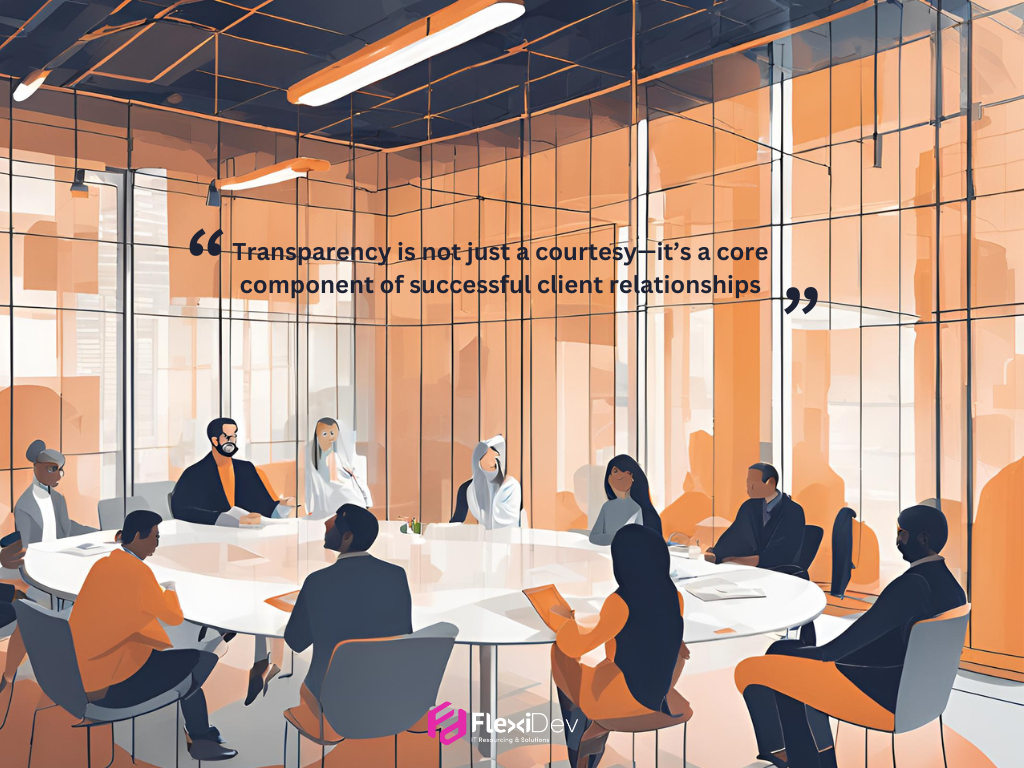
In today’s competitive software development landscape, trust is a vital currency. For clients, understanding where their projects stand, what challenges may arise, and how the development team is working to overcome these challenges can make all the difference in building lasting partnerships. Transparency is not just a courtesy—it’s a core component of successful client relationships. Here, we explore why transparency builds trust and provide practical steps to integrate transparency into your development process.
Why Transparency Matters
Builds Trust and Confidence
Transparency shows clients they are valued, creating a foundation of trust. When clients feel that they’re being included in the process, they’re more likely to be patient, understanding, and cooperative during challenges. In turn, trust nurtures confidence in the development team, reducing anxiety for both sides.
Mitigates Misunderstandings and Surprises
Clear, open communication helps manage expectations, reducing the risk of surprise issues or disappointments. This openness creates a smoother workflow and increases satisfaction, as clients feel they’re on the same journey as the development team.
Encourages More Effective Feedback Loops
Clients with visibility into project progress are better positioned to provide timely and constructive feedback. Transparency enables clients to be more active participants, giving the development team the advantage of insights from their expertise, industry knowledge, and expectations.
Enhances Adaptability and Flexibility
By openly sharing challenges or potential delays, the team can work collaboratively with the client to adjust priorities or scope. Transparency promotes a partnership approach, fostering adaptability that strengthens the project.

Practical Ways to Foster Transparency
Regular Status Updates
Establish a routine of regular updates—whether weekly, bi-weekly, or at milestones. Providing concise and structured updates ensures clients are consistently aware of project progress and any upcoming changes.
Open Access to Project Management Tools
Consider granting clients limited access to project management tools like Jira, Trello, or Asana. This offers them a live view of tasks, progress, and priorities, fostering trust by reducing the “black box” effect common in many development projects.
Implement Sprint Demos and Retrospectives
Inviting clients to sprint demos lets them witness the progress firsthand, ask questions, and offer feedback. Retrospective sessions are also an opportunity to reflect on what went well and where improvements can be made, reinforcing the client’s role in the process.
Share Project Challenges and Roadblocks
Development is rarely a smooth path, and clients appreciate knowing what challenges the team faces. Share roadblocks as they arise and explain how the team plans to address them. It’s better to be upfront about potential delays or issues than to surprise clients later on.
Clarify and Document Client Responsibilities
Transparency isn’t one-sided; it involves setting clear expectations for clients as well. Document and share roles and responsibilities, defining where client input or action is needed. This helps both parties stay accountable and aligned.
Promote Open and Honest Communication
Encourage your team to communicate openly with clients, even when conveying difficult news. Adopting a policy of “no sugar-coating” enables everyone to work from a place of understanding and mutual respect.
Transparency in the development process is more than just a best practice—it’s a way to build resilient partnerships. By being transparent with clients, development teams lay a strong foundation for trust, creating a collaborative environment that results in better outcomes for all involved. As the industry evolves, fostering transparency will continue to be an essential strategy for success.



